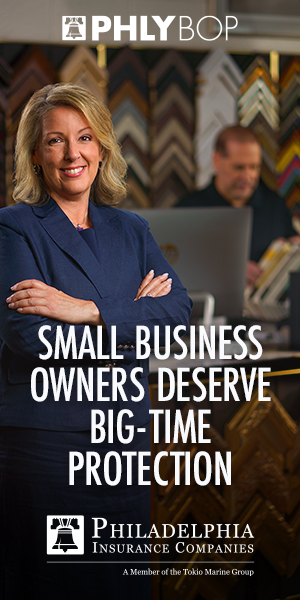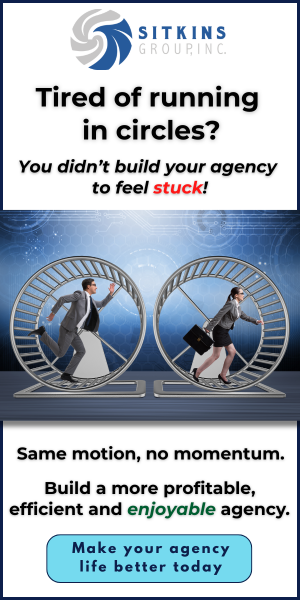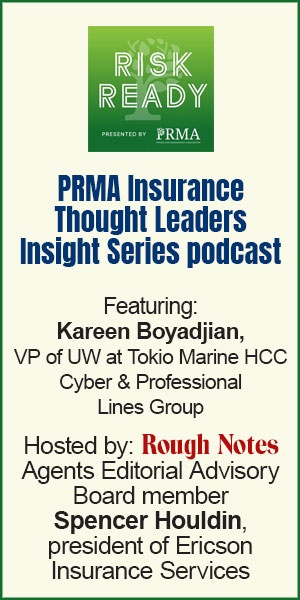Using generational diversity to
better understand and serve clients
By Jennifer Palmieri
Nearly every workforce today, including the insurance industry, is made up of five generations of employees. From traditionalists (born 1922-1945) to baby boomers (1946-1964), Gen X (1965-1980), Gen Y/millennials (1981-1996) and Gen Z (1997-2012), managing and leveraging the contributions of a multigenerational workforce is both a challenge and an opportunity.
It is essential for insurance professionals, whether they work at an agency, for a broker, or somewhere else in the business, to recognize the value of creating strategies that embrace generational diversity. Each generation possesses unique strengths, perspectives and expectations that, when effectively leveraged, can foster innovation, collaboration and organizational growth.
Attracting a multigenerational workforce
When recruiting employees, a one-size-fits-all approach is no longer an effective strategy. Ensuring that generational distinctions are considered throughout the hiring process can significantly impact the success of new talent.
For example, attracting Gen Z into the insurance sector would include sharing the industry’s mission-driven nature and societal significance, stability and growth potential. Gen Z’s desire to positively impact society aligns with the insurance industry’s efforts to tackle challenges like climate change and cyber threats, so making these connections would strongly appeal to this generation.
Technology is another area that attracts Gen Z. Highlighting the use of AI, predictive analytics and cutting-edge digital tools that are revolutionizing underwriting, claims and customer experience are things that would interest tech-savvy Gen Z.
Internships and entry-level programs are also crucial for attracting Gen Z talent. Many insurance employers provide broad internship opportunities across all functions, targeting students with backgrounds in risk management, underwriting and business. Some also seek candidates outside the industry, which helps ensure a diverse talent pool.
Conversely, older generations generally prioritize long-term professional and personal stability. They are more likely to remain at the same company for a longer period of time than their Gen Z counterparts, who are apt to change jobs every few years. Millennials are more attracted to firms that provide a clear path of upward mobility, so showcasing career opportunities and upskilling programs is a fitting way to appeal to this demographic.
Offering flexible work models
An engagement strategy built on flexibility allows agencies, brokers and other employers to meet employees’ changing needs across all phases of their lives. While many organizations believe in the benefits of being in the office full-time, remote and hybrid models remain appealing to all generations. For example, Gen Z generally prefers remote work, while other generations favor the flexibility and structure of hybrid arrangements or working in-office full-time.
Having an adaptive strategy might help to cast a wide net, but it is important to highlight the unique benefits of being in the office. An apprentice model, for instance, provides invaluable opportunities for hands-on learning, mentorship, and spontaneous development that remote work can’t replicate as easily, which is critical as younger generations focus on career growth and aspirations or other generations look to learn new skills.
Tailoring benefits to each generation
Benefits vary from company to company, and each generation has unique priorities and needs. Offering a comprehensive, competitive benefits package designed to support employees at different life stages helps to attract and retain a multigenerational workforce.
Key offerings can include:
- a combination of defined-benefit and defined-contribution plans to secure long-term financial well-being
- parental leave, fertility treatments, and domestic partner benefits that help balance career and family
- health and wellness initiatives that address physical and mental health
Providing career development across generations
Personalized career paths are a vital driver of employee engagement. Employees of all generations seek opportunities to gain experience and advance in their roles. Organizations that can provide continual learning and development curriculums to address each generation’s unique needs will better attract and retain employees across the generational spectrum.
Companies also need to invest in training programs and resources to keep employees at all career stages up to date with industry advancements. For example, as technology continues to evolve, some employees might benefit from artificial intelligence training, ensuring that they remain competitive and relevant in their roles.
Leadership development is also a priority, with robust talent pipelines built to span generations. Empower all employees to take ownership of their roles. By nurturing employees’ growth and aligning career development with their individual goals, companies can better cultivate a culture of continuous improvement and employer loyalty.
Each generation possesses unique strengths,
perspectives and expectations that, when
effectively leveraged, can foster innovation,
collaboration and organizational growth.
Fostering collaboration
Encouraging intergenerational collaboration is an essential component of managing a diverse team, and roles and responsibilities should not be segmented based on age. Employees of various generations should collaborate, using their distinct perspectives to enable business success. This approach ensures that each individual’s potential is leveraged regardless of generational identity, creating a unified team environment where all perspectives and experiences are valued and appreciated.
Employing an omnichannel communication strategy can also bridge generational barriers. Influenced by the era in which they grew up, boomers may prefer face-to-face meetings while Gen Z favors digital communication (messaging apps, social media and chatbots) over traditional methods like phone calls and emails. Customizing communication approaches can promote better collaboration, participation and engagement.
Using generational diversity for a competitive advantage
Generational diversity in the workforce aligns with today’s insurance customer base, which spans multiple generations. Agencies, brokers, carriers and other employers in the industry can better understand and serve their clients by reflecting this diversity in the workforce.
For example, being digitally native enables Gen Z to communicate with peers in their environment. They can also articulate complex insurance terminology and provide clear explanations—a competitive advantage for insurance agencies and brokers looking to pursue younger generations as new customers.
Diverse perspectives spark innovation, driving a company’s evolution in an ever-changing industry. Inclusivity is central to this strategy, valuing the contributions of all employees, regardless of age, background or experience. This enhances employee satisfaction and strengthens a firm’s reputation as an employer of choice.
The author
Since 2020, Jennifer Palmieri has served as Westfield’s executive vice president and chief people officer. She is a passionate advocate for employees and the company, ensuring that employees are supported and empowered to positively impact Westfield customers while enabling the success of the business. Jennifer leads all facets of Westfield’s talent strategy, total rewards programs, human resources operations, and all people-related practices, including diversity, equity, and inclusion; the company’s foundation; and corporate communications.
Westfield is a leading U.S. provider of personal, commercial, and specialty insurance with a strong presence in the international specialty market.






